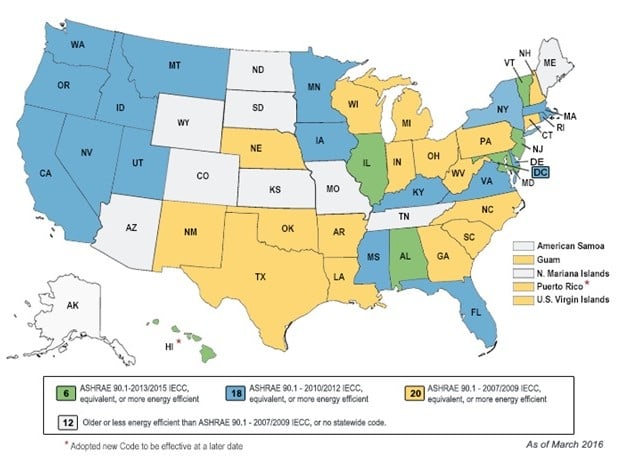This section will cover the various codes and standards that regulate the design of the exterior envelope. Starting with the codes is a discussion of the International Energy Conservation Code. This will be followed with the International Green Construction Code. The segment will conclude on how these codes impact cold-formed steel framed systems. ASHRAE 90.1 is the main standard for energy conservation in design. ASHRAE 189.1 is a parallel standard to the IgCC. The last item will be maps revealing the current status of state adoption of the energy codes.
We publish monthly articles about Codes & Standards in Construction Dimensions.
Explore our latest Codes & Standards updates
INTERNATIONAL ENERGY CONSERVATION CODE
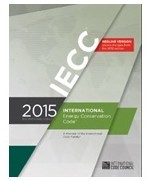
This code, which is administered by the International Code Council, regulates the design and construction of buildings for the effective use of energy. The code is updated on a three-year cycle with the most current being the 2015 edition. The IECC is a design document. For example, before one constructs a building, the designer must determine the minimum insulation R-values and fenestration U-factors for the building’s exterior envelope. Depending on whether the building is for residential use or for commercial use, the IECC sets forth minimum requirements for exterior envelope insulation, window and door U-factors and SHGC ratings, duct insulation, lighting and power efficiency, and water distribution insulation.
The code provides options for using a performance path or a prescriptive path. The prescriptive path tells designers how thermally efficient a wall should be based on building type and geographic location. Under this path are several options with one describing how much insulation by R-Value an exterior envelope wall must contain. Another option is that the code provides a U-Factor for the total opaque area of the wall system. The final option is to consider the total U-factor of the entire wall.
There is a performance option where an energy budget for the building is provided, and the design team must provide a building solution that meets the budget. The solution is then based on a computer simulation of the entire building.
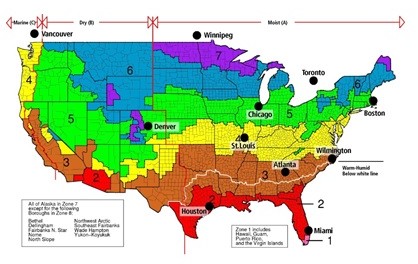
There are only five chapters in the 2015 code. Chapters 1 covers the administration side of the code, and Chapter 2 provides a dictionary of terms.
Chapter 3 specifies climate zones on a county by county basis, which serves to establish the exterior design conditions. In addition, Chapter 3 provides interior design conditions that are to be used in heating and cooling load calculations. The chapter also provides basic material requirements for insulation and fenestration materials.
Chapter 4 is a set of provisions regarding the technical requirements for energy efficiency. The IECC has two main categories of occupancy: the first is residential, the second is commercial. The commercial category includes residential structures that are greater than three stories. Both categories have separate and unique energy requirements for the exterior envelope. This is covered in Chapter 4. It should be noted that the definition of a residential building in this code is unique and subtly different from the other recognized building codes. A residential building is defined as a detached one- and two-family dwelling, along with multiple family dwellings. Included in these are R-2, R-3 or R-4 buildings that are three stories or less in height.
RESIDENTIAL OCCUPANCIES DEFINED
The text below, taken from the 2012 International Building Code, defines residential occupancies:
Group R-1: Residential occupancies containing sleeping units where the occupants are primarily transient in nature, including:
Boarding houses (transient) with more than 10 occupants
Congregate living facilities (transient) with more than 10 occupants
Hotels (transient)
Motels (transient)
Group R-2: Residential occupancies containing sleeping units or more than two dwelling units where the occupants are primarily permanent in nature, including:
Apartment houses
Boarding houses (non-transient) with more than 16 occupants
Congregate living facilities (non-transient) with more than 16 occupants
Convents
Dormitories
Fraternities and sororities
Hotels (non-transient)
Live/work units
Monasteries
Motels (non-transient)
Vacation timeshare properties
Group R-3: Residential occupancies where the occupants are primarily permanent in nature and not classified as Group R-1, R-2, R-4 or I, including:
Buildings that do not contain more than two dwelling units
Boarding houses (non-transient) with 16 or fewer occupants
Boarding houses (transient) with 10 or fewer occupants
Care facilities that provide accommodations for five or fewer persons receiving care
Congregate living facilities (non-transient) with 16 or fewer occupants
Congregate living facilities (transient) with 10 or fewer occupants
Group R-4: This occupancy shall include buildings, structures or portions thereof for more than five but not more than 16 persons, excluding staff, who reside on a 24-hour basis in a supervised residential environment and receive custodial care. The persons receiving care are capable of self-preservation. This group shall include, but not be limited to, the following:
Alcohol and drug centers
Assisted living facilities
Congregate care facilities
Convalescent facilities
Group homes
Halfway houses
Residential board and custodial care facilities
Social rehabilitation facilities
The key points of the International Energy Conservation Code relating to the exterior envelope are as follows:
1. Commercial and residential applications.
The code covers all types of construction from residential to commercial. It is for new construction as well as renovations to existing buildings.
2. Design is driven by eight climate zones.
The code divides the country into eight climate zones, as well as dry and moist climates. This division is down to the individual counties within a state.
3. Prescriptive or performance options.
There are two main options to meet the code. They are performance and prescriptive in nature. The prescriptive method provides direction on how much insulation is required in the exterior envelope, and the performance method allows for a design based on a total energy budget.
4. The amount of continuous insulation determined by code.
The concept of continuous insulation, ci, is defined and made mandatory in the prescriptive method. By definition, continuous insulation is, “Insulation that is continuous across all structural members without thermal bridges accept fasteners and service openings. It is installed on the interior or exterior or is integral to any opaque surface of a building envelope.” There are requirements for ci. If the project calls for cold-formed steel framing, there will be a requirement for ci.
5. Whole building performance is analyzed.
The energy code does not distinguish between individual building elements such as walls and roofs. It looks at the total building. The performance of the total building will be under close scrutiny.
6. There will be an air-/water-resistive barrier.
An air barrier is defined as “material(s) assembled and joined together to provide a barrier to air leakage through the building envelope. An air barrier may be a single material or a combination of materials.” A water-resistive barrier is defined in the International Building Code as, “Not fewer than one layer of No. 15 felt, complying with ASTM D 226 for Type 1 felt or other approved materials shall be attached to the studs or sheathing with flashing as described in Section 1405.4 in such a manner as to provide a continuous water-resistive barrier behind the exterior wall veneer.” The energy code mandates the use of air barriers and water-resistive barriers. It will no longer be an option.
7. Performance tested as installed.
The exterior envelope will be tested when installed to assure compliance and energy efficiency.
THE INTERNATIONAL GREEN CONSTRUCTION CODE
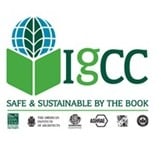
The IgCC is also part of the International Code Council “Family of Codes.” It provides a baseline for sustainability, not just energy conservation. The code is positioned for guidance in the design, construction and operation of a building. Typically building codes stop once the building is complete, so this is unique. Like the IECC, it is a consensus-based document.
The code covers all buildings, old and new. The exceptions to this are buildings that fall under the International Residential Code. The other exceptions are R-2 and R-4 Occupancies that are four stories or less. The final exception is for all R-3 Occupancies.
The scope of the code goes much deeper than the IECC. It includes chapters and provisions for
- Life cycle assessments
- Site development and land use
- Material resource conservation and efficiency
- Energy conservation, CO2 emission reduction
- Water conservation
- Indoor environmental quality
- Commissioning, operations and maintenance
ASHRAE STANDARD 90.1
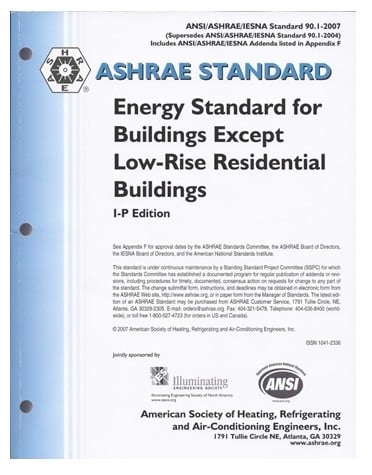
This standard is administered by ASHRAE and is called “Standard 90.1, Energy Standard for Buildings Except Low Rise Residential Buildings.” Of the 12 sections of the standard, one (Section 5) is devoted to the building envelope. It runs a parallel path to IECC. The primary difference is that the IECC is written in mandatory language and is enforceable by local authorities. This standard is the basis of many local adoptions.
ASHRAE STANDARD 189.1
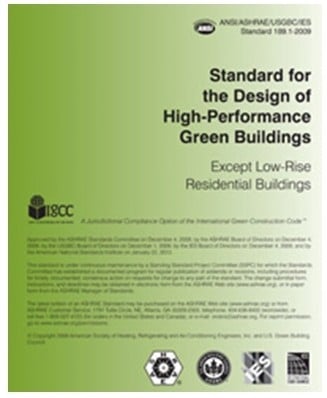
The purpose of this standard is to provide minimum requirements for the siting, design, construction and plan for high performance green buildings. The standard is written in mandatory language and is therefore enforceable by local authorities. It is intended as a compliance option for the IgCC.
ADOPTION OF CODES BY STATE
The maps below are from the Department of Energy and show on a state-by-state basis how the energy codes are being adopted.
